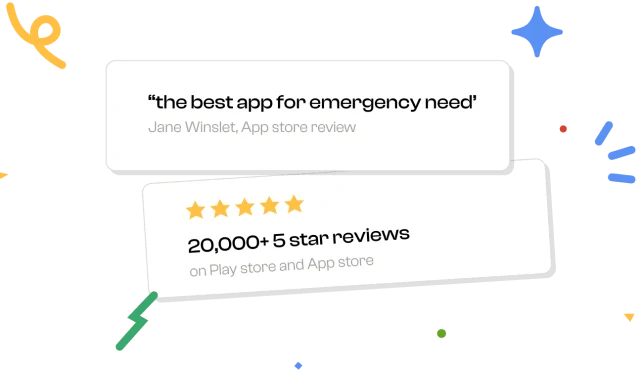Housing prices of homes have skyrocketed way above the market value since the pandemic. So far, it’s been a housing market that has disappointed nearly all ambitious homebuyers.
It is hard to believe that this happened during a pandemic — during the lockdown, people left the city and returned to their suburban homes, and it’s a time of historically low-interest rates.
The question is: If the house cost are so high even during times like these, how more would it be in the future?
Over the past ten years, housing prices have increased by 48.55%. By 2030, it’s believed that a single-family house cost will be around nearly $382,000 or more and would vary from city to city.
How Much will Houses Cost in 2030? US State wise Projected House Price in Future [Table]
| State | Current Price (2023) | Projected Average House Price (2030) | Annual Growth Rate (2023-2030) |
|---|---|---|---|
| Alabama | $250,000 | $382,000 | 5.30% |
| Alaska | $470,000 | $650,000 | 4.50% |
| Arizona | $460,000 | $680,000 | 5.80% |
| Arkansas | $210,000 | $350,000 | 6.00% |
| California | $770,000 | $1,050,000 | 7.20% |
| Colorado | $580,000 | $850,000 | 6.50% |
| Connecticut | $510,000 | $750,000 | 6.20% |
| Delaware | $450,000 | $650,000 | 6.10% |
| Florida | $380,000 | $550,000 | 5.60% |
| Georgia | $340,000 | $500,000 | 5.50% |
| Hawaii | $820,000 | $1,200,000 | 7.00% |
| Idaho | $420,000 | $600,000 | 5.20% |
| Illinois | $360,000 | $520,000 | 5.40% |
| Indiana | $280,000 | $420,000 | 5.00% |
| Iowa | $240,000 | $380,000 | 4.80% |
| Kansas | $230,000 | $350,000 | 4.60% |
| Kentucky | $250,000 | $380,000 | 5.10% |
| Louisiana | $220,000 | $330,000 | 4.40% |
| Maine | $340,000 | $550,000 | 5.70% |
| Maryland | $430,000 | $680,000 | 6.30% |
| Massachusetts | $530,000 | $820,000 | 6.40% |
| Michigan | $330,000 | $470,000 | 5.10% |
| Minnesota | $340,000 | $500,000 | 5.40% |
| Mississippi | $200,000 | $310,000 | 4.20% |
| Missouri | $280,000 | $420,000 | 5.00% |
| Montana | $370,000 | $520,000 | 5.50% |
| Nebraska | $240,000 | $380,000 | 4.80% |
| Nevada | $480,000 | $700,000 | 5.90% |
| New Hampshire | $500,000 | $720,000 | 6.00% |
| New Jersey | $610,000 | $850,000 | 6.80% |
| New Mexico | $320,000 | $450,000 | 5.20% |
| New York | $620,000 | $960,000 | 7.10% |
| North Carolina | $360,000 | $520,000 | 5.60% |
| North Dakota | $300,000 | $430,000 | 5.10% |
| Ohio | $330,000 | $470,000 | 5.20% |
| Oklahoma | $250,000 | $370,000 | 4.70% |
| Oregon | $570,000 | $780,000 | 6.70% |
| Pennsylvania | $380,000 | $550,000 | 5.70% |
| Rhode Island | $520,000 | $750,000 | 6.20% |
| South Carolina | $330,000 | $470,000 | 5.30% |
| South Dakota | $280,000 | $400,000 | 5.00% |
| Tennessee | $340,000 | $500,000 | 5.50% |
| Texas | $400,000 | $550,000 | 5.60% |
| Utah | $600,000 | $820,000 | 6.60% |
| Vermont | $490,000 | $700,000 | 6.00% |
| Virginia | $450,000 | $650,000 | 6.10% |
| Washington | $650,000 | $900,000 | 7.00% |
| West Virginia | $240,000 | $370,000 | 4.80% |
| Wisconsin | $340,000 | $480,000 | 5.30% |
| Wyoming | $420,000 | $600,000 | 5.20% |
Housing Market 2030 & Beyond
General Trends:
- Overall price increase: Housing prices are expected to continue rising across most of the US, although the rate of growth may vary depending on location and market conditions. Some experts predict national averages reaching $382,000 by 2030, with specific states like California potentially exceeding $850,000.
- Inventory shortage: The housing market is currently facing a shortage of available homes, which is putting upward pressure on prices. This trend is expected to continue, especially in desirable areas.
- Demographic shifts: Millennials and Gen Z will become the dominant home-buying demographics, driving demand for smaller, more affordable homes and urban living.
- Technological advancements: Technology is expected to play an increasingly important role in the housing market, with the rise of virtual tours, online platforms, and data-driven decision-making.
Specific Insights:
- Rise of the suburbs: As cities become more expensive, families may increasingly choose to live in suburbs or smaller towns, seeking affordability and space.
- Focus on sustainability: Eco-friendly homes and communities will be in high demand, driven by growing environmental awareness and concerns about climate change.
- Increased diversity in housing options: There will be a growing demand for diverse housing options, including co-living arrangements, micro-apartments, and tiny homes, catering to different lifestyles and affordability needs.
- Greater emphasis on affordability: With rising costs, there will be a greater focus on affordable housing solutions, including government programs, innovative financing models, and community land trusts.
Challenges and Opportunities:
- Rising interest rates: Rising interest rates could make it more difficult for some people to afford to buy homes, dampening demand and potentially slowing price growth.
- Economic uncertainty: Global economic factors and potential recessions could impact the housing market, causing fluctuations in prices and demand.
- Supply chain disruptions: Ongoing supply chain issues could continue to affect the construction industry, leading to delays and increased costs for new homes.
Despite these challenges, the long-term outlook for the housing market remains positive. The increasing population, coupled with the growing demand for housing, suggests that the market will continue to evolve and adapt to new trends and challenges.
Here are some additional resources you may find helpful:
- Real Estate Market Size and Trends, Forecast, 2030
- Here’s What the Housing Market May Look Like in 2030
How can you prepare for the higher prices?
Aspiring homebuyers can take some steps to be in a position to afford a home in the future. Consistent savings without any compromise is the first step. And young people must start saving as soon as they can, as starting early would be an advantage — the more money you have, the larger the down payment would be.
If you don’t have plans to purchase within five to 10 years, you could consider investing so that the cash’s value won’t change and beat inflation.
Some ways you can invest
1. Index funds
It is a low-cost strategy. The S&P 500 has been consistently yielding an average return of 10% per year. You can also open a brokerage account through a financial provider like Charles Schwab or Fidelity for getting started.
2. Robo-advisors
Robo advisors like Wealthfront and Betterment will invest and rebalance your money based on your preferences automatically. It’s an easy way compared to other strategies that require more effort. You can also try Acorns, which is an investing platform that is easy to use for new investors. It also has an exciting feature that will automatically invest the spare change you have at the end of the day.
3. High-yield Savings Account
If you plan to purchase soon, saving your money in a high-yield savings account would work well. Marcus by Goldman Sachs High-Yield Savings Account or the Ally Bank High-Yield Savings Account earns interest on cash, even if you aren’t using the account often.
Some way to start saving
You need not cut off on leisure and entertainment at once but start slowly, by saving tax returns or bonuses when you’re considering the house cost. It’s highly advised to have a down payment of 10 to 20% before taking up a mortgage. You must also not forget to calculate using the future projections rate and how many months would be suitable for you.
Let us take you through the probable plans you can employ if you want to buy a house for $400,000 in 2030. That means you have nine years to plan your saving. We’ve done the math for you.
Check out our calculations below:
- Say you’re putting your cash in a savings account with a 0.5% APY, and you’re making a 10% down payment of $40,000. You need to save around $363 a month.
- In case you’re making a 20% down payment of $80,000 in savings account for the same 0.5%APY, you should save up at least $725 every month.
- If you’re putting your money in an investment account instead, you need to save around $230 each month if you’re estimating 10% year-over-year returns. This amount is for a 10% down payment of $40,000.
- Lastly, if you’re planning to make a 20% down payment of $80,000 at 10% year-on-year estimated returns in an investment account, you need to save close to $460 a month.




















